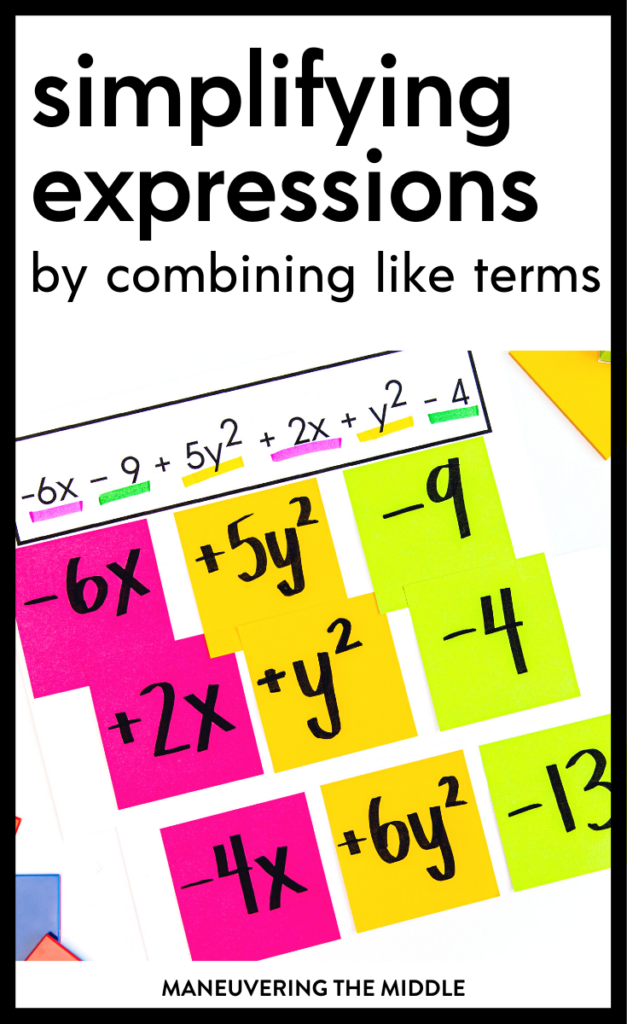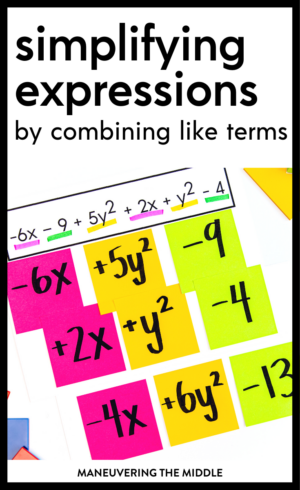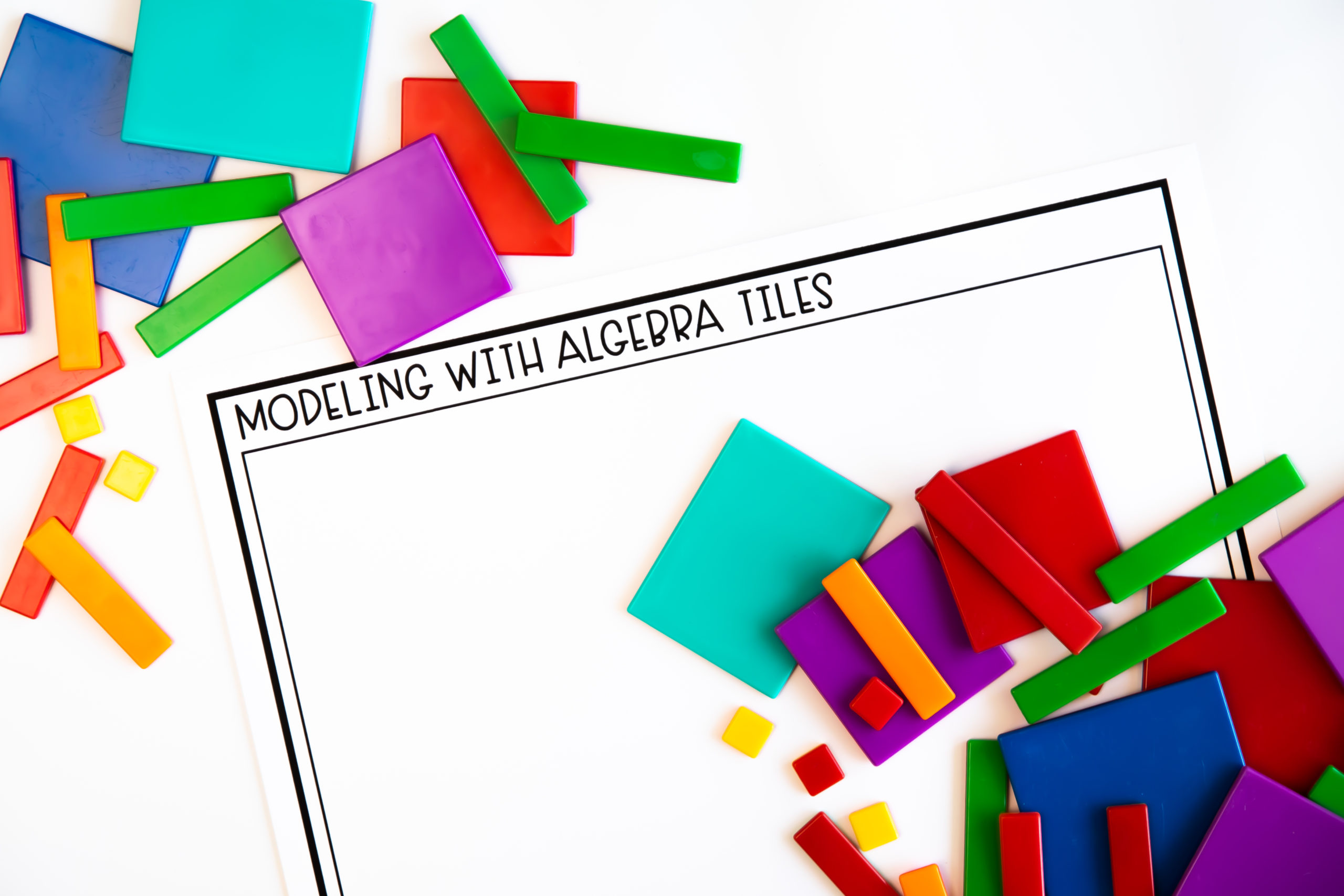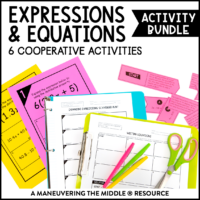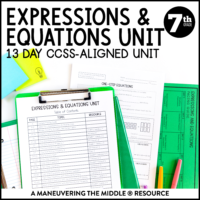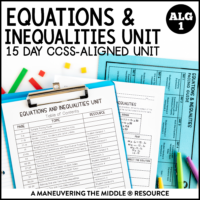Simplifying expressions is foundational in Algebra! Clear understanding of this concept will help students solve equations in middle school and high school math. Come back next week when we will expound on this concept with the distributive property. Let’s dig into simplifying expressions by combining like terms.

Vertical Alignment
As always, I like to take a look at the standards. Simplifying expressions starts as early as 6th grade in some states and continues to be used through… all future math.

In my experience, students need a thorough review of the basics of simplifying expressions each year, so these tips are for 6th grade teachers, 7th grade teachers, 8th grade teachers, Algebra teachers, and so forth.
Ideas for Hooks
As you introduce or review simplifying expressions, grab your students’ attention with a hook. Help them relate to the content with a real word example! Here are a few ideas for simplifying expressions hooks that I have used or have heard other teachers use.
- Watch this MadTV clip with your students. Ask them – what would be an easier way to communicate his order?
- Ask students to group like items. Display a picture with different objects and ask how they would group them. You can see an example of this on one of our 7th grade student handouts below. Connecting this to ordering food in the drive-thru is a real-life example that students can probably connect. The drinks are usually grouped in a drink carrier, the fries are all in one bag, and the chicken nuggets are typically in another bag. Combining like items is all around us!

- Write down various animals on notecards (1 animal per notecard). Give each student a notecard and ask them to group themselves accordingly. Don’t give them any additional instructions. After they make groups, ask them why they chose their groups. Ideally, students will have found “like” animals, giving you a perfect segway into like terms.
Instructional Ideas
Anchor Chart – The basis of simplifying expressions is thoroughly understanding that a “like term” is a term with the same base (or variable) and the same exponent (or power) and that combining like terms is adding and subtracting them. Because this is so important, I recommend creating an anchor chart with some examples and non-examples of like terms. In addition, there are lots of vocabulary terms that will be sticking around for a long time – coefficient, variable, and term – so be sure to have those words and definitions posted for easy reference.
Use the CRA Framework – It’s no secret that we are fans of the CRA framework (you can see the many posts we have written here and here), and simplifying expressions by combining like terms is another perfect skill that fits into this method.
- Concrete – Use Algebra tiles to group like terms. You can learn more about how to use Algebra tiles in our Getting Started with Algebra Tiles Guide. You can grab it here.
- Representational – Students can draw shapes or tallies to represent the terms.
- Abstract – When students are ready, they can combine like terms using the rules that they now have conceptual understanding of.
Simplify the Expressions by Annotation
Once students are working in the abstract part of the framework, you will want students to use a method for grouping to keep their work organized and create barriers for simple errors. Here are some popular ideas:
- Underline or draw various shapes around like terms including the sign right before the term
- Highlight using different colors for different like terms
- Rewrite on different colored sticky notes and then rearrange

- Use a T-chart. Personally, this is what I used with my students since I found that sometimes the shapes could make the signs hard to read.

Other Tips
- You can have students put an exponent of 1 on terms like x.
- Physically show your students the difference between 2x and x^2 using algebra tiles.
- Easy activity – write a bunch of different terms on your whiteboard and play the flyswatter game! Say a term, and students have to hit a like term.
- Integer fluency is pretty key when combining like terms. If it has been a while since they have practiced, go over some of the basics before jumping into combining like terms.
Simplifying expressions is truly the foundation of algebra – you have to simplify before you can solve equations. Make sure to come back next week where we talk about simplifying expressions with the distributive property.
